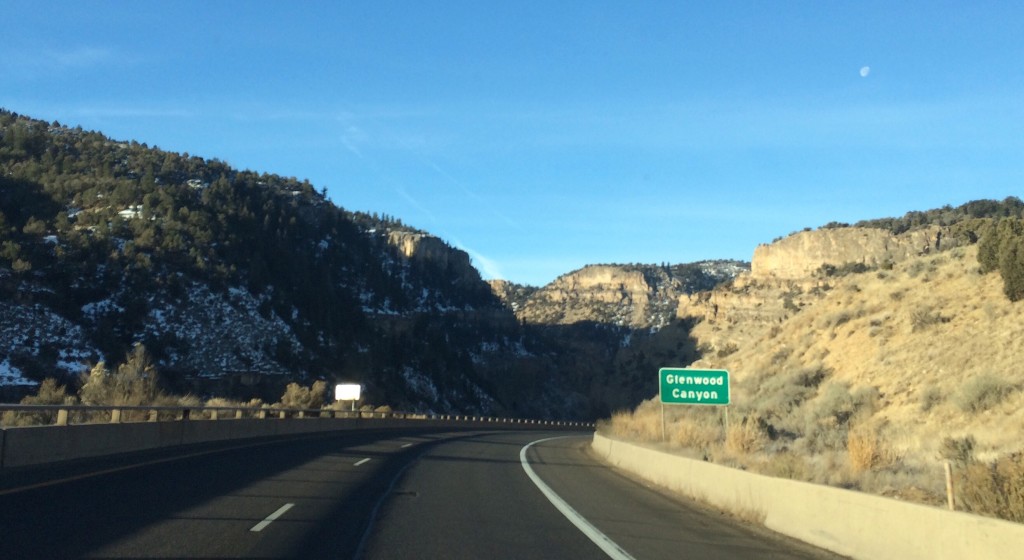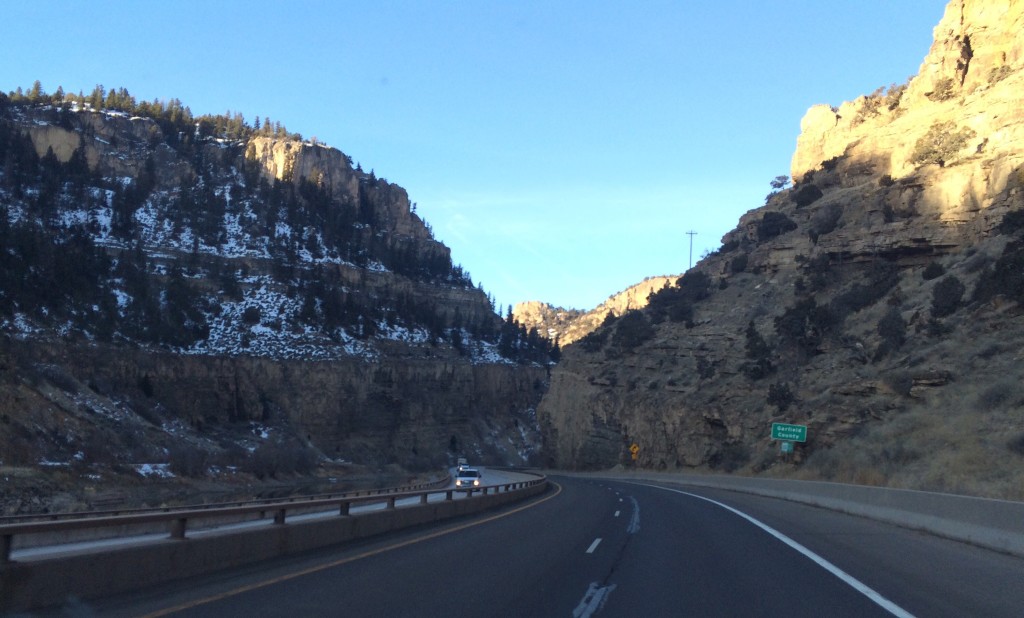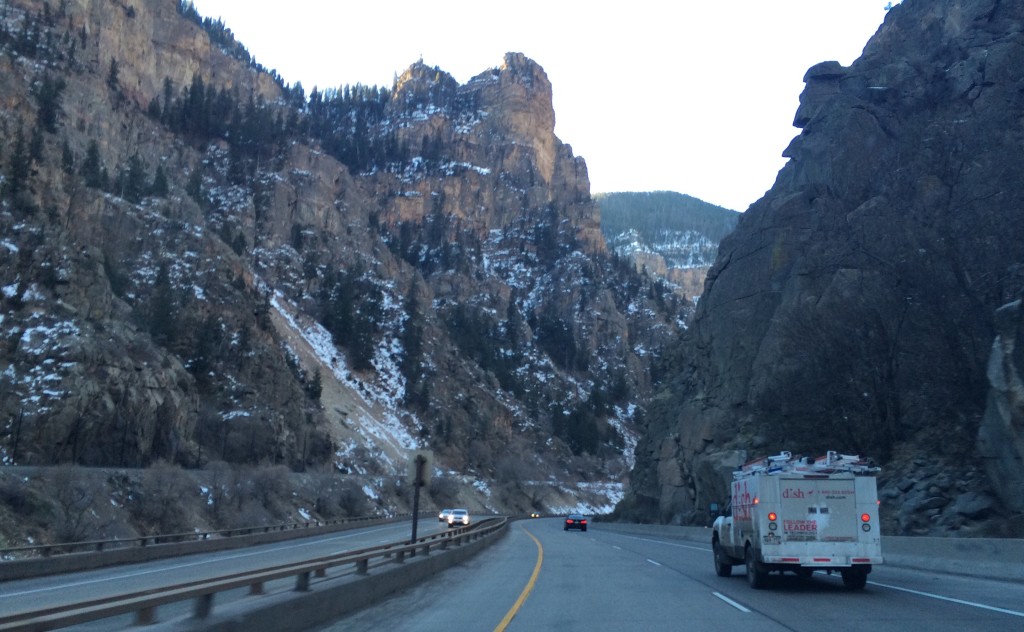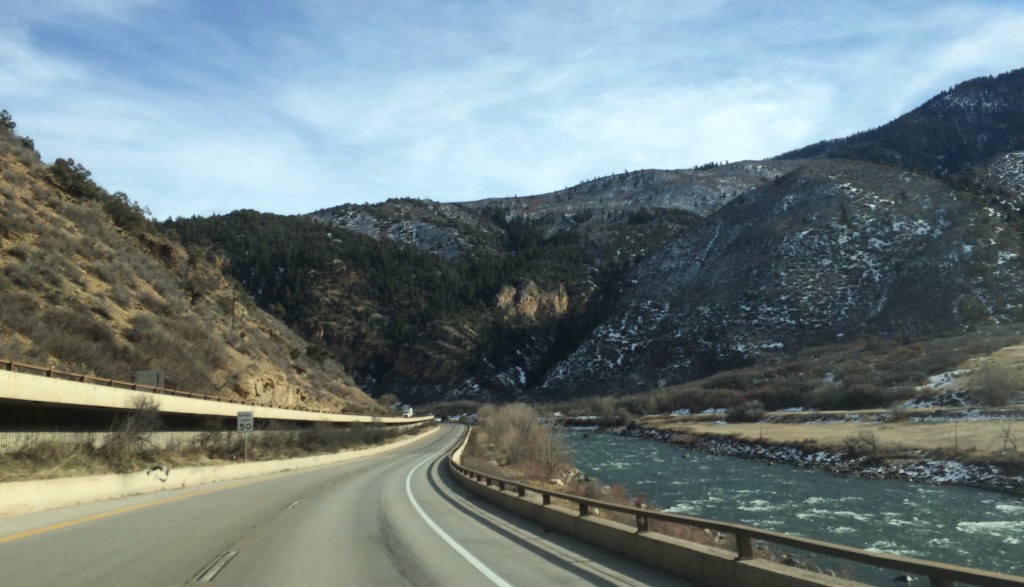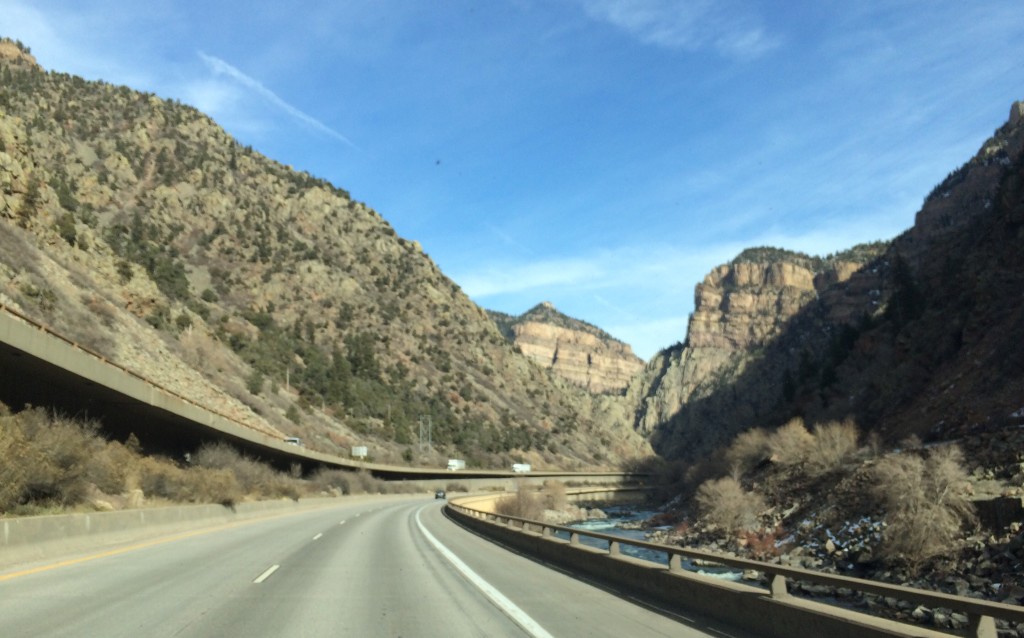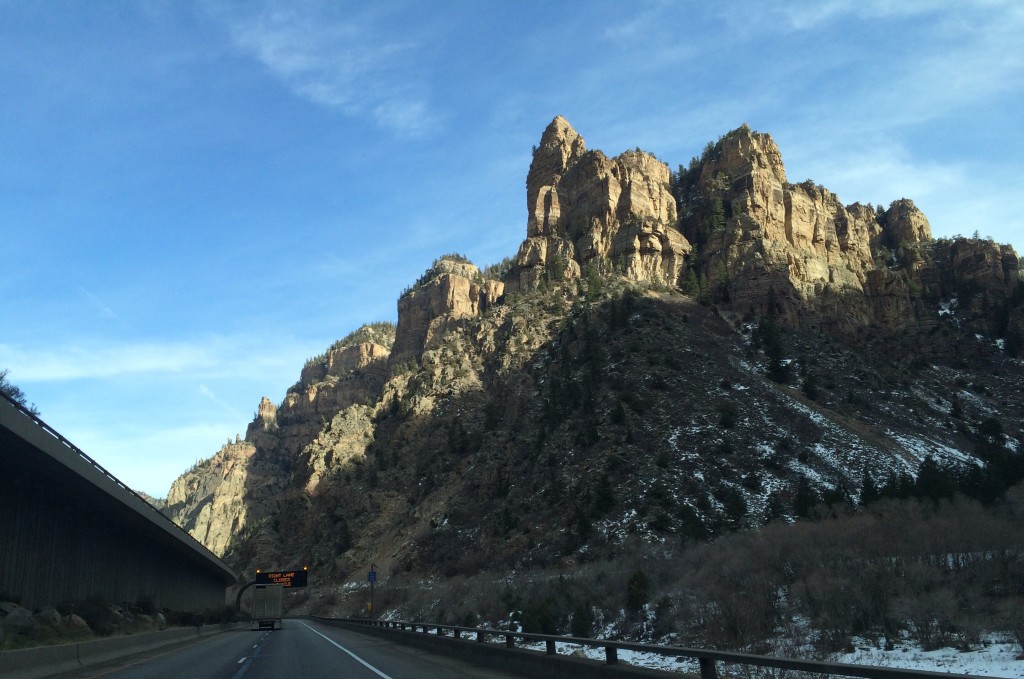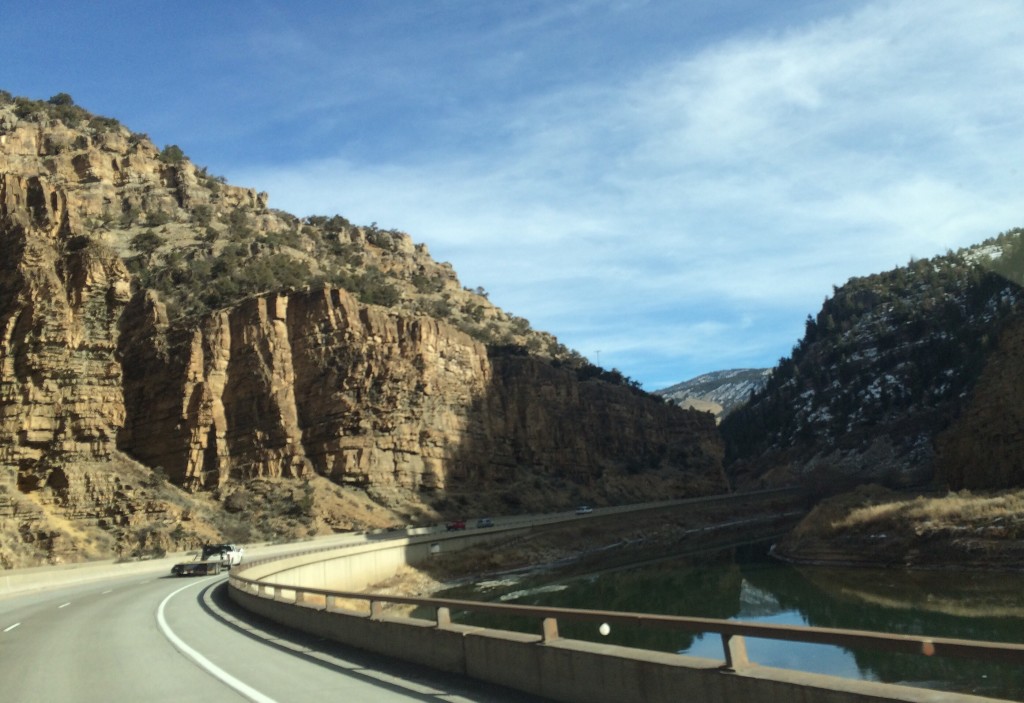Driving on I-70 through Colorado is beautiful. From Denver to Vail the drive through the mountains is spectacular. You go over two 10,000+ ft mountain passes – the Continental Divide and Vail Pass. Then there’s a big change. The geography and geology transform drastically as you approach Glenwood Canyon. Even if you have no interest in geology or physiographic provinces, it’s a fun, cool drive. Here’s the drive-by look at the geography and geology of the canyon. “Layman’s terms. None of that inside bs jargon.“
The landscape changes as you leave Vail and head east toward Eagle. You notice the tall Rocky Mountains are now in your rearview mirror. The, dry, arid, brown landscape of Colorado’s Western Slope, the Colorado Plateau, is ahead of you. It’s the type of landscape that people associate with southern Utah or Arizona, not Colorado. Glenwood Canyon is approaching.
The canyon was created by a simple process where a portion of the earth uplifted at the same time the Colorado River was cutting down on it. These opposing forces sped up the canyon formation. The canyon has a lot to offer, geologically. You can see all three rock types, sedimentary, igneous, and metamorphic, taking you back into the Precambrian. There’s a glacial lake, which you can’t see from the road, recent and ancient rock slides, and 1,000+ ft cliff faces to soak it all in. If the geography or geology aren’t you’re thing, you’ll still enjoy taking in the unique scenery.
If you’ve never made the 13 mile drive through the canyon, here are some views of what you’re missing. Starting with driving east through the canyon in the low-lit morning.
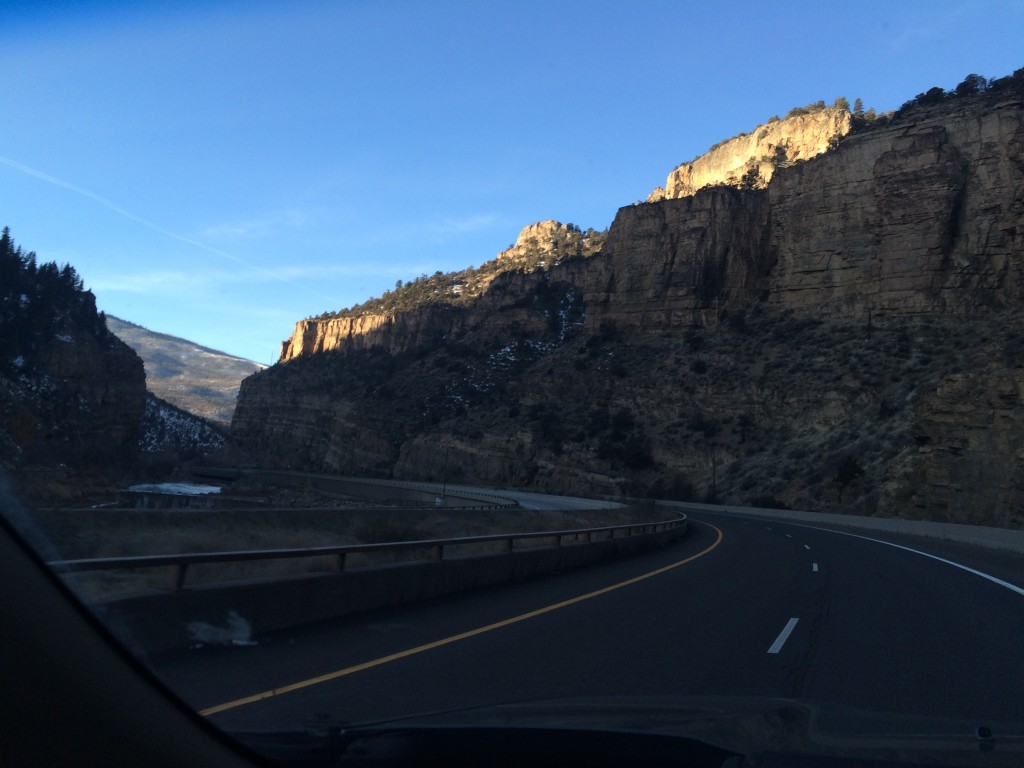
Poor lighting from the shade, but a good representation of how the river and road parallel. And look at that beautiful blue Colorado sky.

